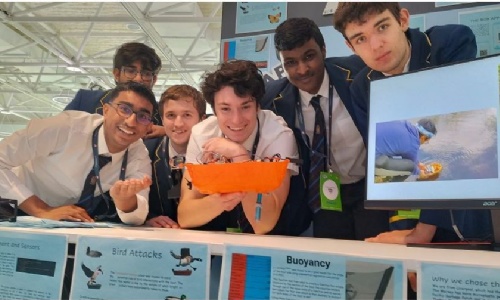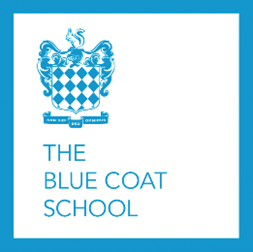Is Blue Coat’s BOB boat the Royal Navy’s future?

 The Royal Navy’s Head of Data & Navy Applications was so impressed by the Blue Coat BOB (Buoyant Observer of Billabongs) boat project in a national computer science competition at London’s Science Museum he told the team it had “extreme potential” and would report back to his colleagues.
The Royal Navy’s Head of Data & Navy Applications was so impressed by the Blue Coat BOB (Buoyant Observer of Billabongs) boat project in a national computer science competition at London’s Science Museum he told the team it had “extreme potential” and would report back to his colleagues.
Mr Holloway met the Blue Coat Team BOB at London’s Science Museum during the Finals of the PA Raspberry Pi to promote STEM (science, technology, engineering, and mathematics) education.
He said: “This was a great event. The ingenuity and skill of these young people is genuinely astounding. It gives you hope the future may not be glum after all!”
Paul Finley, Defence Consultant, who was also present at the event, said online: “A group of students from Liverpool will be cherishing your advice Ben! Delighted you could experience it first-hand.”
It was the third time the Blue Coat team reached the PA Raspberry Pi competition Final and this interest from a top Naval technology boss was some compensation for not winning this year.
technology boss was some compensation for not winning this year.
Team BOB, consisting of Upper Sixth Formers Aidan, Charlie, Subil, Ram, Saumya and Jamie had to show how their engineering and coding skills using a Raspberry Pi microcomputer could create a more sustainable world.
After arrival at the Science Museum, the team had an hour to prepare BOB for the 15-minute presentation to the judging panel of company executives. BOB was developed over five months to fit this year’s competition theme of Innovations to Save the Planet.
BOB can navigate a stretch of water autonomously collecting detailed sensory data, and creating an informative heat map to show pollution hot spots. The program that the students developed for BOB uses two machine-learning algorithms that they built entirely themselves. The Billabong name derives from an Australian term for a stagnant pool.
The pH probe meter equipment beneath the boat allows BOB to register the different patterns in water and detect sources of pollution. The probe measures dissolved solids in water and their torpidity to indicate their quality.
Ram, of U6C, said: “We were able to demonstrate the key features of our product including how the boat moves, why we chose the boat as our product and for the colour orange, and various questions about how we worked as a team to optimise this project and complete it within the deadline.
 “After lunch, we displayed our project on an exhibition-style stall and were able to talk to many technology companies about the product itself.
“After lunch, we displayed our project on an exhibition-style stall and were able to talk to many technology companies about the product itself.
“The one stand-out conversation was with Ben Holloway who is the Royal Navy’s Head of Data. He explained that a project like ours has ‘extreme potential’ and was so impressed he took our flyers to show his colleagues.
“It was the most fantastic feeling was when people read our name tags and said, ‘Oh you are from BOB, we heard you have made an incredible boat, would you mind presenting it to us?!’
“Finally, after a day of presenting BOB, the judging took place, and we narrowly missed out on a winner’s place. However, we were able to leave with our heads held high having created a product that was of high quality and having had a lovely day thanks to PA Raspberry Pi Consulting.”
Mr Giblin, Science Teacher, said: “I am so proud of the boys. They’ve worked so hard, they handled themselves so well at the event, and they were so impressive on the stand explaining the project. Of course, they were disappointed not to win after coming so close so often and as this was their last chance.
“But the interest shown by the Royal Navy Head of Data was an incredible compliment to their talent. One company boss even offered them all jobs on the spot!”
